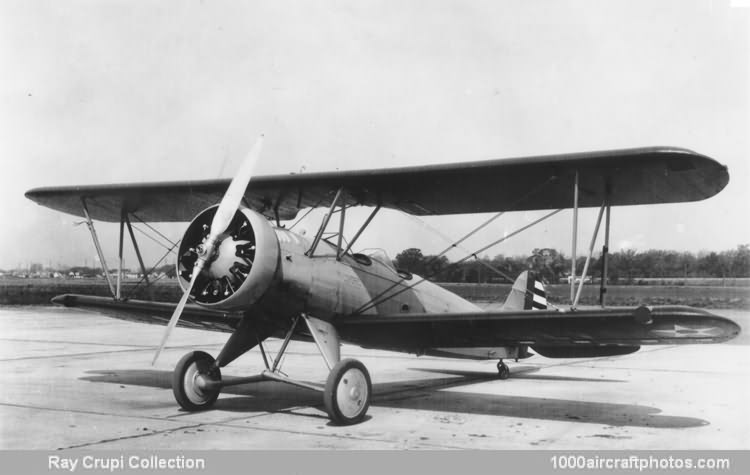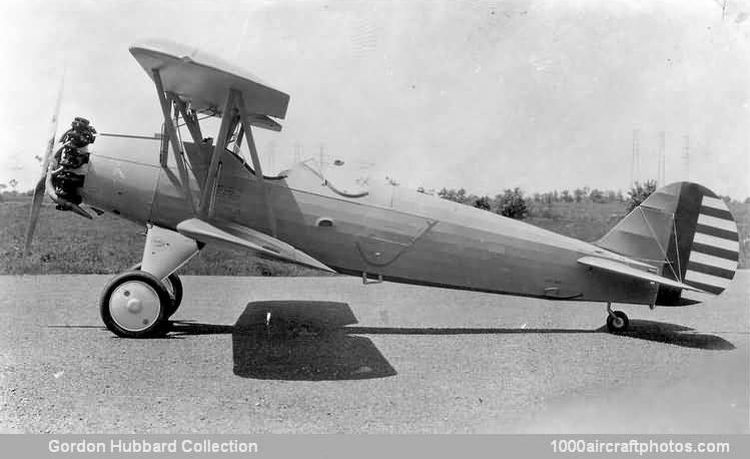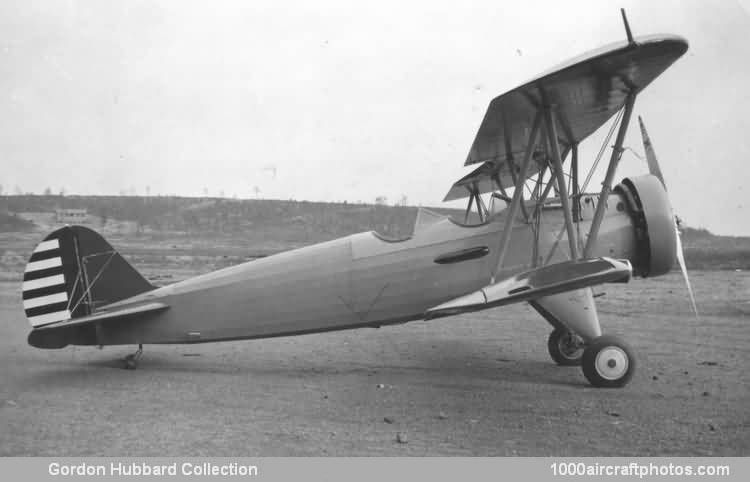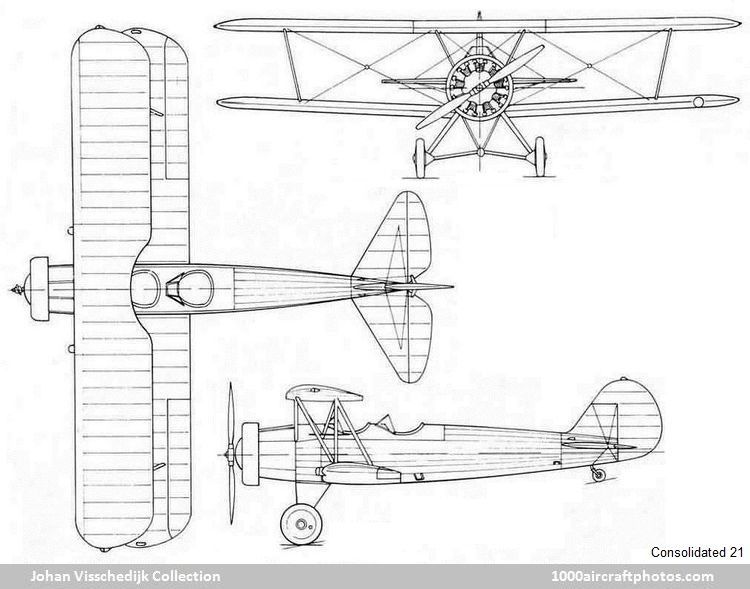09/30/2013. Remarks by
Johan Visschedijk: "Late in 1930, the USAAC held a design competition for a new trainer to replace the
PT-3. Joseph 'Joe' M. Gwinn Jr. designed the Model 21-A, based on the PT-3 but with more graceful lines, and a prototype, known as the XPT-933 was flown in February 1931 by Bill Wheatley, just eight weeks after design work started. An 170 hp Kinner engine was installed, but the 21-A was designed to be adapted for more advanced training with up to 400 hp engines. Additional wing fittings were provided in order to accommodate engine changes without stability problems.
Four 21-As were ordered for evaluation by the Army with 165 hp Continental R-545-1 engines, designated Y1PT-11 (s/n 31-593 to 31-596). All were delivered in May 1931. Later, two were converted to PT-11D standard, the third to a BT-6, and the fourth to the Y1PT-11A with an 175 hp Curtiss Challenger R-600-1 engine. Later this became a PT-11A, then, with an 180 hp Lycoming
YR-680-1, the Y1PT-11C.
One of the YPT-11s was also flown with a 210 hp Kinner YR-720-1 as a Y1PT-11B, the designation of five more similar aircraft (s/n 32-367 to 32-371) delivered from July 1932. Subsequently, these were redesignated PT-11B then converted to PT-11D standard.
21-A N4Y-1 (V110) (
Jack McKillop Collection).
A sixth Y1PT-11B (s/n 32-395) was transferred to the USCG (s/n 10, later 310, finally V110) with an 165 hp Wright J-6-5, but later was converted again with a 220 hp Lycoming R-680 and designated N4Y-1.
21 Y1PT-11D (32-379) (
Gordon Hubbard Collection).
Between May and July 1932, 21
Y1PT-11Ds (s/n 32-372 to 32-392) were delivered with 220 hp Lycoming R-680-3 nine-cylinder radials and were later designated PT-11Ds. In 1934, the Navy ordered three similar XN4Y-1s (BuNos. 9456 to 9458) and the final order of this series was for eighteen PT-11Cs with the Wright R-760-E7 engine and convertible wheel/float landing gear for Colombia (c/n 37 to 54) delivered July-August 1934. The last of these was withdrawn from use in 1952.
21-A BT-7 (
Gordon Hubbard Collection).
Ten Y1PT-12s (s/n 32-357 to 32-366) were basically similar except for a 300 hp Pratt & Whitney Wasp Junior R-985-1 engine and minor equipment changes. Delivered in April/May 1932, they were designated PT-12, then Y1BT-7, and finally BT-7. One unidentified aircraft was marked as the XBT-937, but this was possibly a civil 21-C.
The sole Y1BT-6 was a Y1PT-11 (s/n 31-595) fitted with a 300 hp Wright J-6 (R-975-1), later designated BT-6, then converted to a PT-12D. One BT-7 (s/n 32-362) was assigned to Colonel H.M. Turner, US Air Attaché in London, and allocated, but did not carry, RAF serial DR629 and was still in use in 1944.
The equivalent civil Model 21-C (registered NR784N c/n 1) received
TC 2-405 (April 12, 1932) with a 300 hp Wasp Junior A engine and a gross weight of 3,100 lb (1,406 kg) and was primarily intended for overseas markets. Leigh Wade received one in December 1932 (c/n 14) for use as a demonstrator in South America and this was sold in Argentina in 1934. A third aircraft (c/n 12, registered NC13289) was sold to a Mr. A.B. Echols on July 13, 1934.
The first aircraft was used for a sales trip to China in 1933 by Clint Warner. Returned to the USA, it was stored engineless then rebuilt with a 400 hp Wasp Junior for demonstrations to the Mexican AF which resulted in an order for ten. On January 25, 1936, it crashed at Mexico City killing a Mexican general on board. Warner died of his injuries three weeks later.
As Consolidated had moved to San Diego, the Mexican order (with the 420 hp Wasp Junior SB) was built by Fleet Aircraft at Fort Erie in Canada. Delivered in November and December 1936 with two machine guns, one fixed and one flexible in the observer's cockpit, at least one saw service during the Cedillista Rebellion of May 1938. Several were transferred to the Naval Aviation School at Veracruz in late 1943.
The Fleet 21K (330 hp Jacobs L-6B) was also offered for sale in Canada but not built. However, the eleventh Canadian-built 21M, a demonstrator, was converted to this standard in 1947. Still in existence and since 1985 preserved in flying condition at the Canadian Warplane Heritage Museum (registered C-FDLC), this is the only known survivor of the series although one other may be existant in Mexico."



